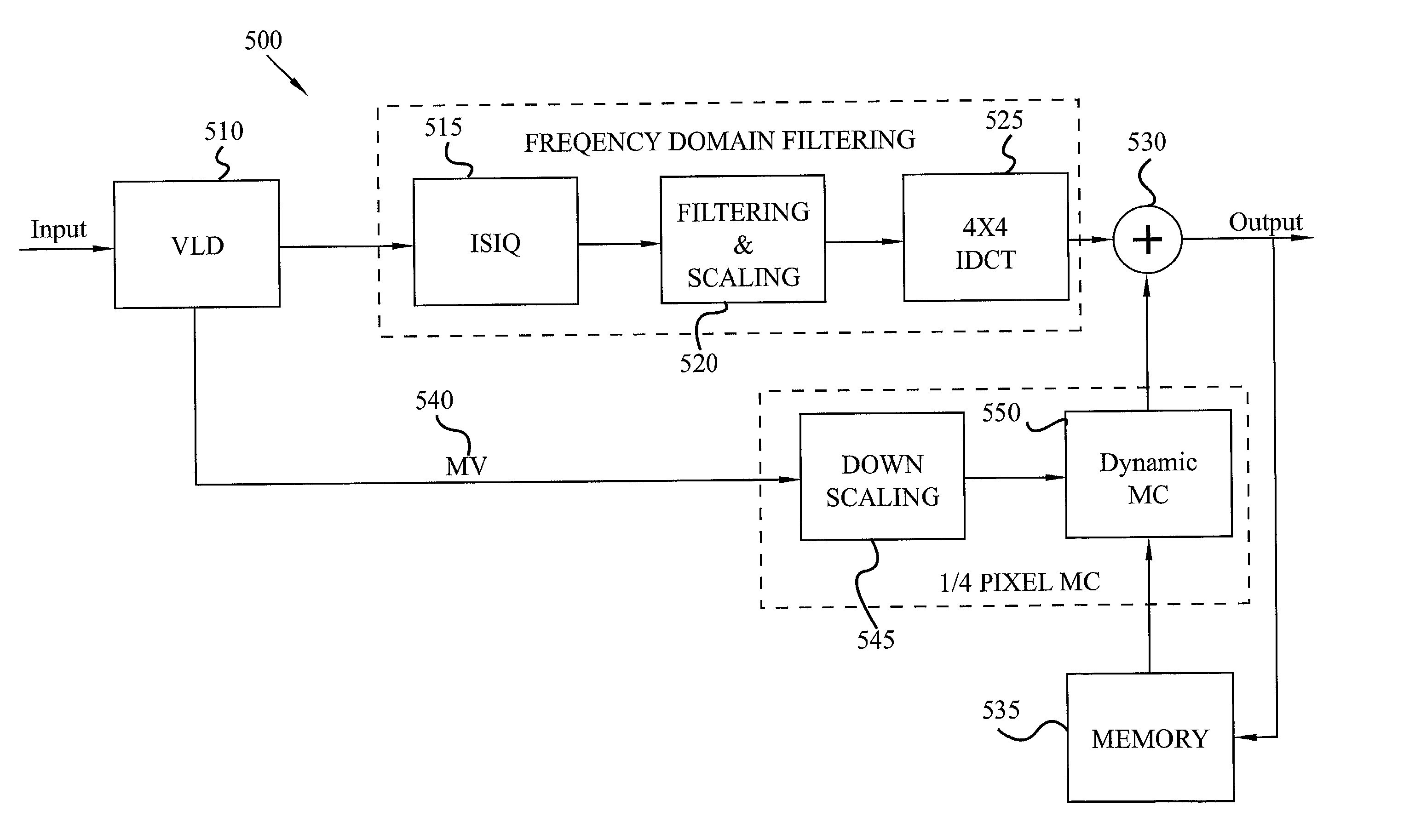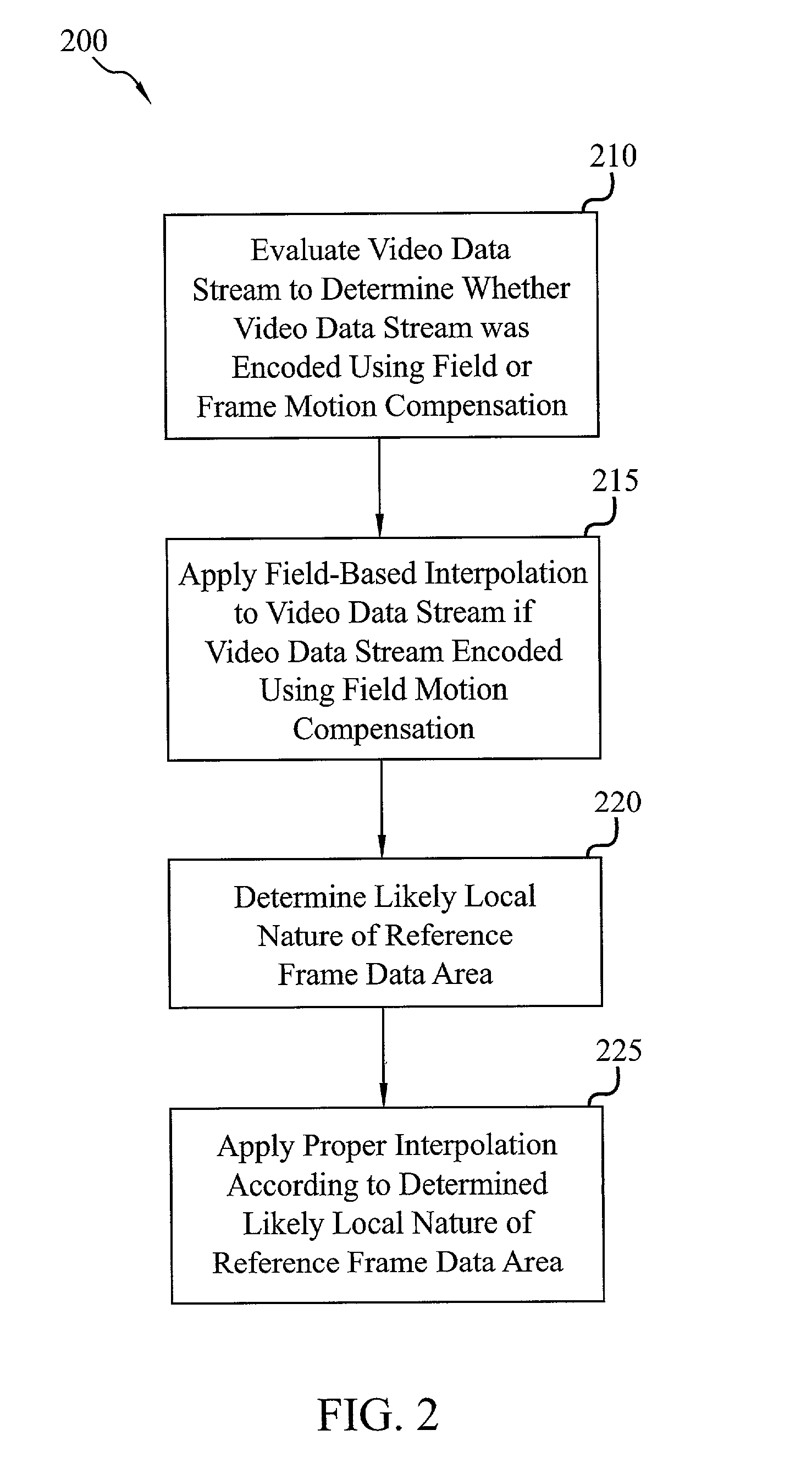Decoding system and method for proper interpolation for motion compensation
a motion compensation and interpolation technology, applied in the field of decoding system and interpolation proper for motion compensation, can solve the problems of hd resolution decoding complexity, spatial (pixel) domain filtering, and inability to save computation complexity in this approach, so as to avoid blurness and aliasing
- Summary
- Abstract
- Description
- Claims
- Application Information
AI Technical Summary
Benefits of technology
Problems solved by technology
Method used
Image
Examples
Embodiment Construction
[0020] The present invention relates to a decoding system and method for applying proper interpolation for motion compensation to a video data stream, which can embody MPEG technology. Individuals skilled in the art of MPEG technology may wish to proceed to the Detailed Description section of this specification below. However, for those individuals who are new to MPEG technology, the following Overview Section presents many of the basic concepts and terminology useful in understanding embodiments of the present invention and their benefits and advantages.
[0021] 1. Overview
[0022] Individuals who are new to MPEG technology are directed to U.S. Pat. No. 5,122,875, which is incorporated herein by reference, for a more detailed explanation of MPEG-like encoding / decoding processes than the following summary explanation provides. Moving Picture Experts Group (MPEG) is the name of a family of standards used for coding audio-visual information (e.g., movies, video, music) in a digital compre...
PUM
 Login to View More
Login to View More Abstract
Description
Claims
Application Information
 Login to View More
Login to View More - R&D
- Intellectual Property
- Life Sciences
- Materials
- Tech Scout
- Unparalleled Data Quality
- Higher Quality Content
- 60% Fewer Hallucinations
Browse by: Latest US Patents, China's latest patents, Technical Efficacy Thesaurus, Application Domain, Technology Topic, Popular Technical Reports.
© 2025 PatSnap. All rights reserved.Legal|Privacy policy|Modern Slavery Act Transparency Statement|Sitemap|About US| Contact US: help@patsnap.com



